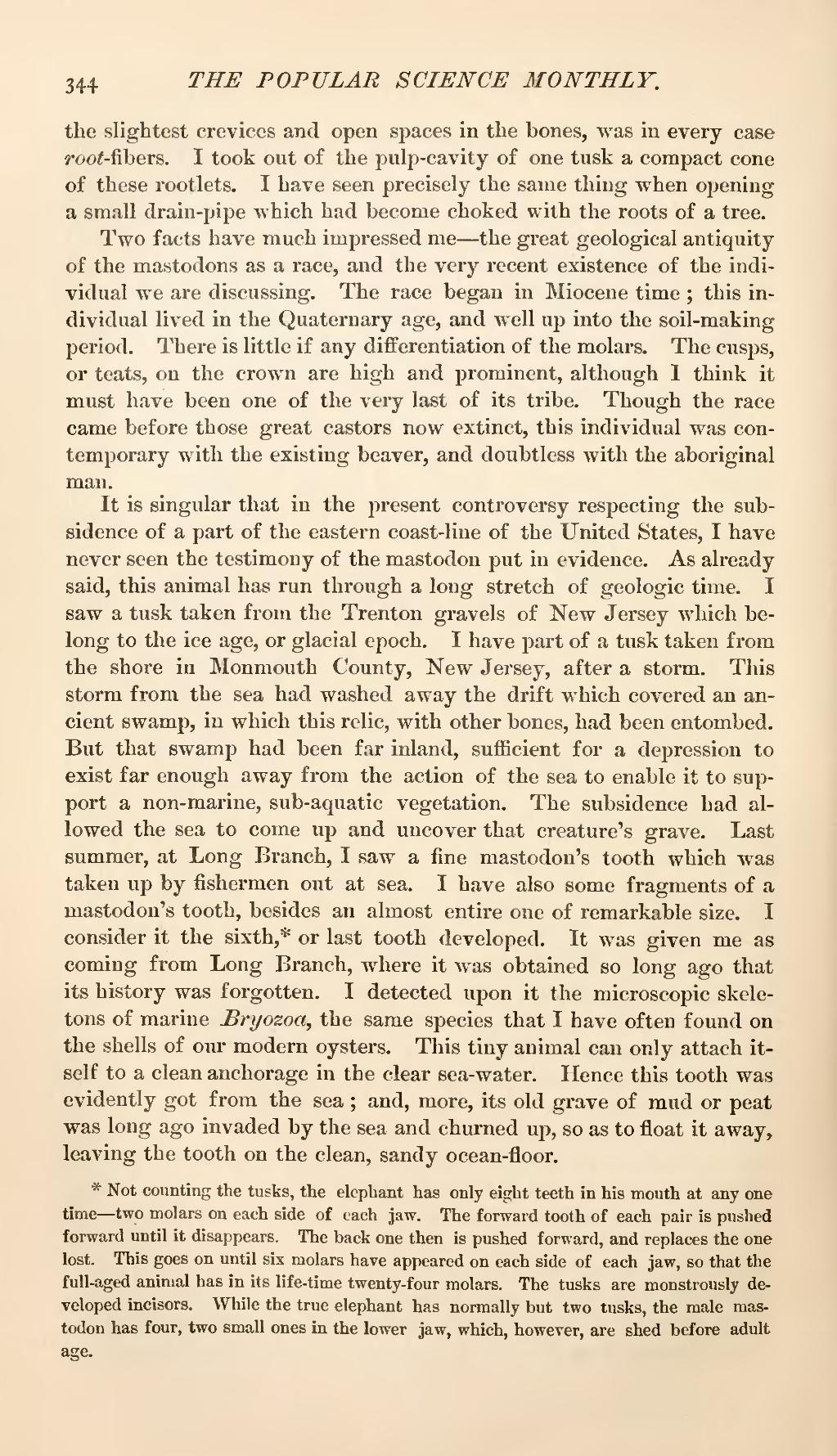the slightest crevices and open spaces in the bones, was in every case root-fibers. I took out of the pulp-cavity of one tusk a compact cone of these rootlets. I have seen precisely the same thing when opening a small drain-pipe which had become choked with the roots of a tree.
Two facts have much impressed me—the great geological antiquity of the mastodons as a race, and the very recent existence of the individual we are discussing. The race began in Miocene time; this individual lived in the Quaternary age, and well up into the soil-making period. There is little if any differentiation of the molars. The cusps, or teats, on the crown are high and prominent, although I think it must have been one of the very last of its tribe. Though the race came before those great castors now extinct, this individual was contemporary with the existing beaver, and doubtless with the aboriginal man.
It is singular that in the present controversy respecting the subsidence of a part of the eastern coast-line of the United States, I have never seen the testimony of the mastodon put in evidence. As already said, this animal has run through a long stretch of geologic time. I saw a tusk taken from the Trenton gravels of New Jersey which belong to the ice age, or glacial epoch. I have part of a tusk taken from the shore in Monmouth County, New Jersey, after a storm. This storm from the sea had washed away the drift which covered an ancient swamp, in which this relic, with other bones, had been entombed. But that swamp had been far inland, sufficient for a depression to exist far enough away from the action of the sea to enable it to support a non-marine, sub-aquatic vegetation. The subsidence had allowed the sea to come up and uncover that creature's grave. Last summer, at Long Branch, I saw a fine mastodon's tooth which was taken up by fishermen out at sea. I have also some fragments of a mastodon's tooth, besides an almost entire one of remarkable size. I consider it the sixth,[1] or last tooth developed. It was given me as coming from Long Branch, where it was obtained so long ago that its history was forgotten. I detected upon it the microscopic skeletons of marine Bryozoa, the same species that I have often found on the shells of our modern oysters. This tiny animal can only attach itself to a clean anchorage in the clear sea-water. Hence this tooth was evidently got from the sea; and, more, its old grave of mud or peat was long ago invaded by the sea and churned up, so as to float it away, leaving the tooth on the clean, sandy ocean-floor.
- ↑ Not counting the tusks, the elephant has only eight teeth in his mouth at any one time—two molars on each side of each jaw. The forward tooth of each pair is pushed forward until it disappears. The back one then is pushed forward, and replaces the one lost. This goes on until six molars have appeared on each side of each jaw, so that the full-aged animal has in its life-time twenty-four molars. The tusks are monstrously developed incisors. While the true elephant has normally but two tusks, the male mastodon has four, two small ones in the lower jaw, which, however, are shed before adult

